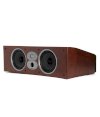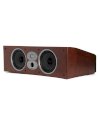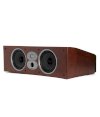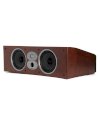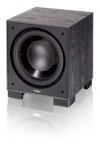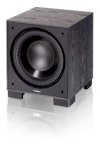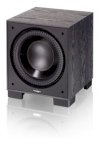Mô tả sản phẩm: Loa Thiel SCS4T (200W, 2WAY, Loudspeaker)
Coaxially mounted drivers, while easier to make time-coherent, can present the designer with other challenges. Mounting a tweeter in the throat of a mid/woofer can lead to problems with diffraction. According to Gary Dayton, Thiel's technical support manager, great care has been taken in the design of this mid/woofer to avoid the pitfalls of coaxial design. "The visible aluminum cone of the midbass driver is unusually shallow, and therefore not inherently rigid. We've designed this driver with a shallow diaphragm because it interferes with the tweeter very little and permits a wide dispersion characteristic relatively free from diffraction. The midbass driver is made of aluminum and is more rigid than one might expect, but we reinforce the diaphragm by laminating a polystyrene cone with a deeper profile onto the back of the aluminum cone. The result is a moving system that is very rigid and nonresonant, and therefore remains pistonic over a very wide bandwidth."
The coaxial drive-unit is mounted on a handsome aluminum baffle that covers roughly the top third of the speaker's face. Above and below the drive-unit are forward-firing ports that Thiel says are each tuned to the same frequency. The baffle meets the nicely veneered cabinet (available in Black Ash, Dark Cherry, or Natural Cherry) with tight tolerances, and the front panel is gently and elegantly rounded at the sides and top to avoid diffraction and to look nice. The SCS4T is a good-looking speaker. Though the SCS4T appears to be a floorstanding tower speaker, its cabinet hides a secret, if not a very well-kept one. Micah Sheveloff, Thiel's media representative, told me that the SCS4T's internal volume is exactly the same as that of the stand-mounted SCS4. In essence, the bottom third of the SCS4T's enclosure is not used to increase the speaker's low-frequency extension, but instead is a hollow, integrated stand. As Sheveloff said, "The bottom of the SCS4T is a very heavily reinforced pedestal, and many hours were spent evaluating numerous design variations. However, it came down to two choices: use the same cabinet volume as the SCS4 to achieve the responsiveness we were seeking, or completely redesign the woofer—which we could not do and deliver the SCS4T at its current price point." Consequently, Thiel claims for both the SCS4 and the SCS4T exactly the same bass extension and frequency response.
On the rear, attached to a rather large plastic service panel, is a single pair of robustly built five-way binding posts (the SCS4T can't be biwired or biamped). A second plastic service panel is directly behind the coaxial driver. The speaker rests on beautifully designed and made outriggers—aluminum extensions that screw into the bottom of the cabinet. Attached to the outriggers are four handsome spiked feet of aluminum finished in a gun-metal sheen, which let you easily level the speakers if your floor, like Stephen Mejias's, is a little uneven. The combination of outriggers and feet not only adds to the well-designed looks of the SCS4T, but also greatly increases its stability as it meets your floor. More speakers of this size need such feet!
Set-up
I let the SCS4Ts run in with music for around 150 hours before doing any critical listening. During that time the bass extension improved, the midrange opened up, and the treble lost its initial edge and bite. Break-in concluded, I began moving the speakers around the room, trying to find the best place for them. As I did, it became clear to me that the SCS4T sounded in no way boomy or lumpy. In fact, its upper bass, midbass, and low bass all sounded relatively lean. This lack of boom gave me the option of placing the SCS4Ts closer to my front wall than most speakers I've used. In fact, I conjecture that, in a large room, the SCS4Ts might be able to be placed very near a front wall without becoming too overbearing in the bass—which can be useful when trying to keep the domestic decorative peace with your spouse, or when you're trying to maximize what little feng shui you've got going for yourself.
Because my room is a bit narrow (I get some bass reinforcement from the sidewalls), I couldn't get a good low-frequency balance with the SCS4Ts right up against the front wall. Instead, I settled on positioning them 16" from the front wall, which is about 8" closer to that wall than I've put any other speaker in this room. This gave me the best low-bass reinforcement, without too much room overhang or sluggishness. Yet even in these locations—the best I could find for the Thiels—the low bass was present but not powerful, extending down to only about 45Hz in my room, while the upper and midbass remained slightly shelved down.
Throughout my listening I experimented a lot with toe-in and got the most immediate sound with the tweeters pointing directly at my ears—but this tended to narrow the soundstage and decrease image depth. Toeing out the Thiels widened and deepened the soundstage but with reductions in clarity, articulation, and transient snap. I settled on toeing out the SCS4Ts about 10°, so that their tweeter axes were directed just past my ears; this gave me the best balance of articulation and soundstage immersion and clarity.

